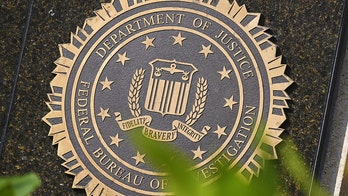WASHINGTON – Three years after a federal agency warned that the country was at risk due to sloppy standards at its labs that handle bioterror germs, such as anthrax, little has been done to fix the problem.
A 56-page report released Monday by the Government Accountability Office says federal officials have failed to develop adequate standards for lab design, operation and construction.
The report also says that the facilities, called high-containment labs, are being built to local standards because there are no national safety guidelines for them. The study released Monday is a follow-up to a similar study done five years ago.
Another government report released late last year by the USDA inspector general found several violations of regulations in bioterror labs went undetected for years. And two years before that, laboratories at the Centers for Disease Control and Prevention repeatedly were called out for failing to properly secure bioterror agents, like anthrax, in private government audits.
The CDC and the USDA share responsibility for security at more than 300 government, academic and commercial organizations registered to work with toxins or germs that have bioterror potential.
The news of the lax government standards comes after officials at the University of Texas Medical Branch said a vial containing a virus that can cause hemorrhagic fever went missing from a research facility in Galveston over the weekend.
On Saturday, the Galveston National Laboratory said there was no indication of wrongdoing, but it still could not account for the missing vial at its research facility. The medical branch says the virus, native to Venezuela, is transmitted only through contact with Venezuelan rats. Experts say the disease is not transmitted person-to-person nor is it able to survive in U.S. rodents.
CDC Director Tom Frieden told USA Today he fears the department’s budget will be slashed even more if the federal government cuts funding, which it is on course to do. He told the paper his agency will lose more than $300 million -- a painful financial hit at a time when the agency is struggling to keep up with bioterror threats and new germs.
Concerns surrounding a bioterror attack took hold of the country after the October 2001 anthrax attacks. The powdery substance was mailed to lawmakers on Capitol Hill and members of the news media in New York and Florida. By November 2001, five people were dead and 17 others sickened.
Ten years after the attacks, a report from the National Research Council said the source of the anthrax could not be verified. That conclusion contradicted some of the evidence from the FBI at the time that supported the conclusion that it came from Fort Detrick, a U.S. Army installation outside Frederick, Md. In all, the investigation into the anthrax case spanned six continents, involved more than 10,000 witnesses, 80 searches and 26,000 email subpoenas and used 29 government, university and commercial laboratories for scientific analyses.
The Associated Press contributed to this report.




